Reclaimed Cobblestones
Medina Cobblestones
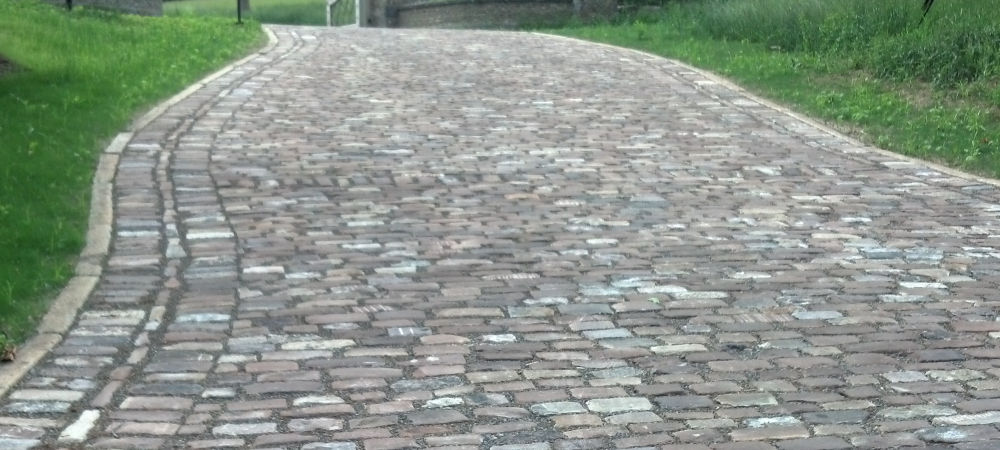
Antique Medina Cobblestone creates a permeable driveway to a sustainable country estate. (more pictures)
Reclaimed Medina Cobblestones
From Buckingham Palace in London to the Brooklyn Bridge in New York City, incredible structures have been constructed from Medina stone. But its most popular use was as paving stones, from the 1830s into the 1920s.
After being discovered in 1824 during construction on the Erie Canal, Medina stone soared in popularity. More than 40 quarries operated near the village in Orleans County, New York, and stones shipped all over the world for street paving and building projects.
The same qualities that once appealed to masons—strength, durability, traction and an attractive look—make our reclaimed cobblestones a favorite for customers today. Our customers have used recovered Medina cobbles for paving projects (patios, driveways and walkways at homes and businesses), building façades, retaining walls and more.
One pallet of our salvaged Medina cobblestones includes varying shades of gray, brown, tan, pink and red. Antique cobblestones can range from 6-12 inches long and an average of 5 inches wide.
To discover more about the history of our reclaimed street pavers, visit the History section below.
View Gallery Product History Download Cutsheet Request Pricing
View Reclaimed Medina Cobblestones in Action!
-
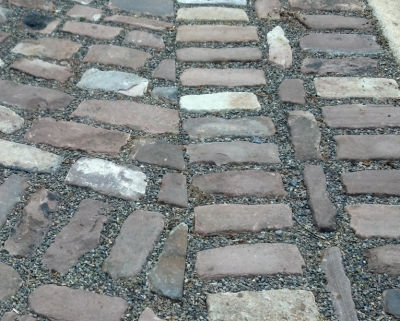 VIEW LARGER
VIEW LARGERMedina Cobbles
Permeable Medina Cobblestone installation meets LEED criteria -
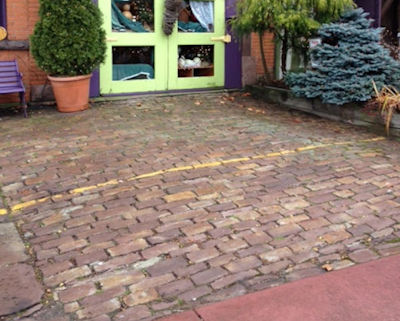 VIEW LARGER
VIEW LARGERMedina Cobbles
Medina paver stone driveway at historic firehall turned brewpub -
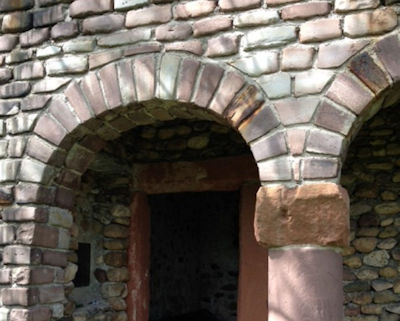 VIEW LARGER
VIEW LARGERMedina Cobbles
Not just for landscape, these antique cobblestones were used to build a chapel -
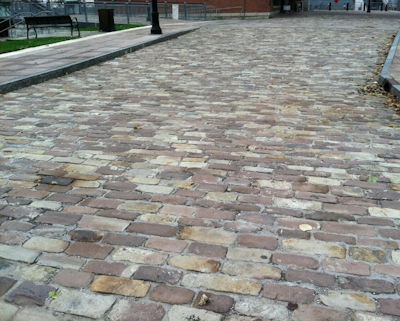 VIEW LARGER
VIEW LARGERMedina Cobbles
Public street built from Medina Cobblestone to honor the areas history -
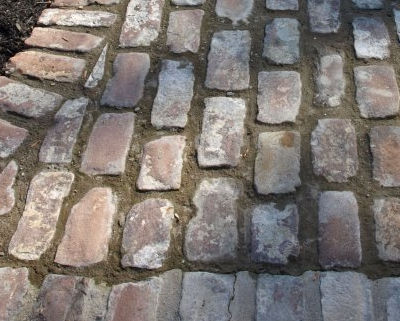 VIEW LARGER
VIEW LARGERMedina Cobbles
A pathway with character wends its way through a garden -
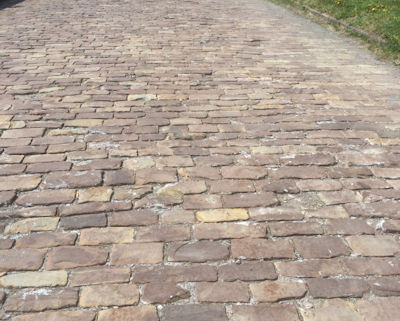 VIEW LARGER
VIEW LARGERMedina Cobbles
120+ year old Medina cobblestone street still in good condition -
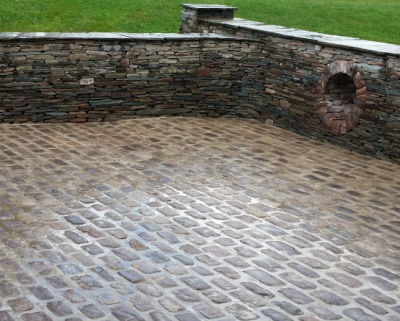 VIEW LARGER
VIEW LARGERMedina Cobbles
The landscaping of this backyard is enhanced by an antique cobblestone patio -
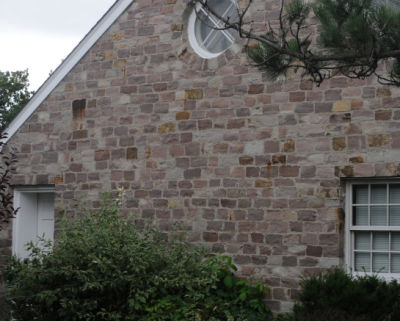 VIEW LARGER
VIEW LARGERMedina Cobbles
A maintenance building constructed of old Medina Cobblestones -
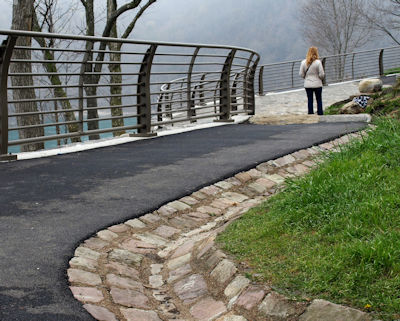 VIEW LARGER
VIEW LARGERMedina Cobbles
Historic park path gutter created from authentic cobblestones -
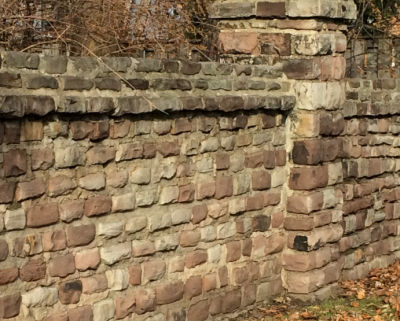 VIEW LARGER
VIEW LARGERMedina Cobbles
Rustic garden wall created from antique cobblestone pavers -
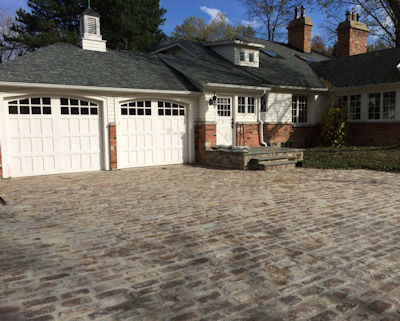 VIEW LARGER
VIEW LARGERMedina Cobbles
The approach to this country home is a welcoming cobblestone driveway -
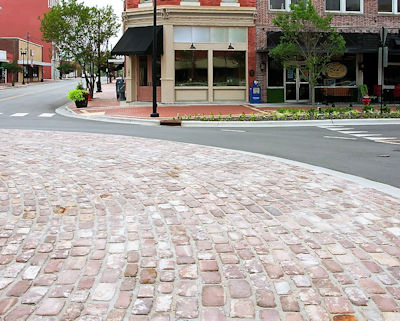 VIEW LARGER
VIEW LARGERMedina Cobbles
Traffic circle in a historic district streetscape -
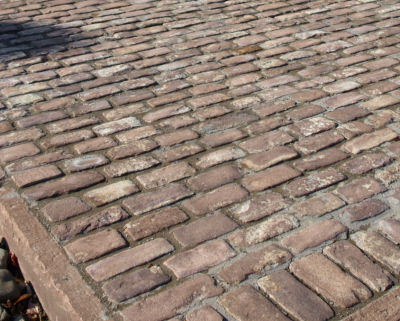 VIEW LARGER
VIEW LARGERMedina Cobbles
Antique Medina Curbing edges this cobble driveway -
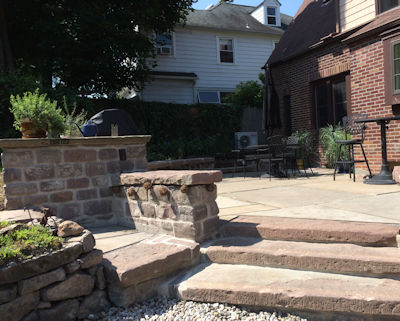 VIEW LARGER
VIEW LARGERMedina Cobbles
Medina Curb steps and Cobblestone wall
A Snapshot of Medina Cobblestone History
Our reclaimed Medina cobblestones were originally cut from Medina stone, which was discovered during the construction of the first Erie Canal in the 1820s.
An excellent paving and construction material, the stone was used for roads and bridges, as well as hundreds of public buildings, churches, mansions and farmhouses. The cobblestones used for roads were often small pieces of stone left over after the larger curbing and building block was cut. Rather than dispose of this excess stone, it was fashioned into cobbles and used to pave roads.
The vast majority of these roads and buildings were constructed in New York State. But as people migrated during the mid-1800s, they took this construction method with them to sites throughout New England and as far west as Michigan, Wisconsin and Colorado.
To satisfy demand, numerous quarries opened near Medina, New York, where the stone was excavated in beautiful shades of red, brown, tan and gray. These quarries are not active today, but the stone they produced is still a vibrant part of our communities.
How cobblestones were made and installed
Long before motor vehicles and rubber tires, cobblestones were worn smooth on top by steel wagon wheels and horseshoes. For streets, cobblestones were installed using sand and small stones as bedding and jointing material, along with a mortar of hydraulic lime, a predecessor to Portland cement.